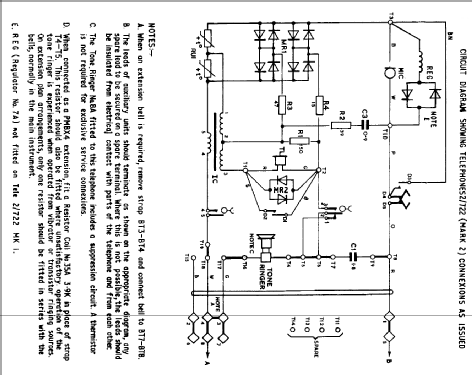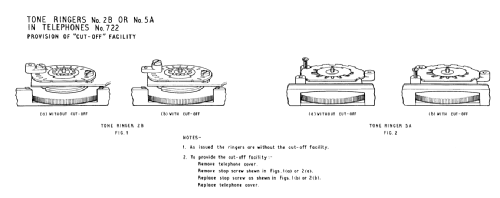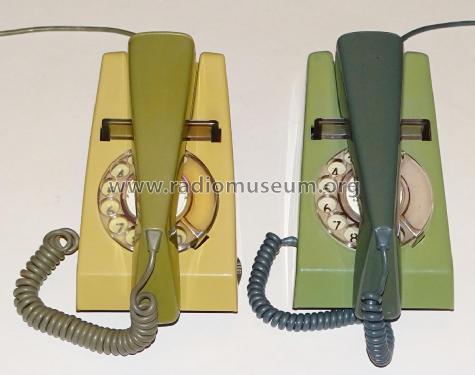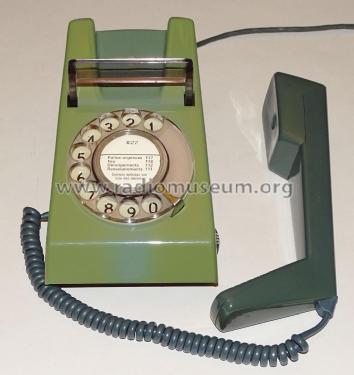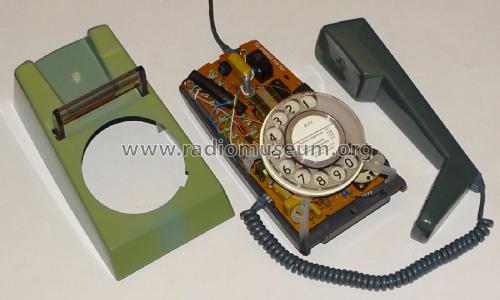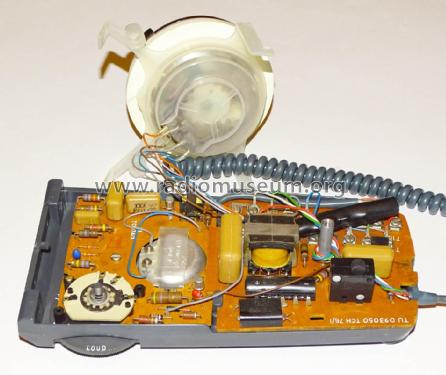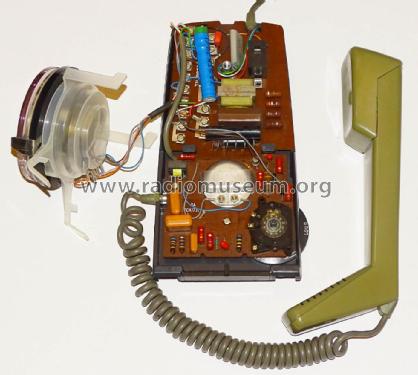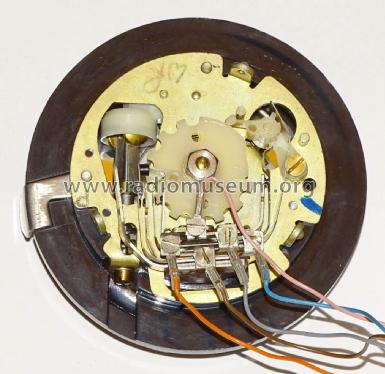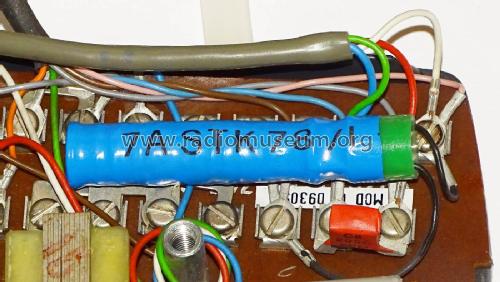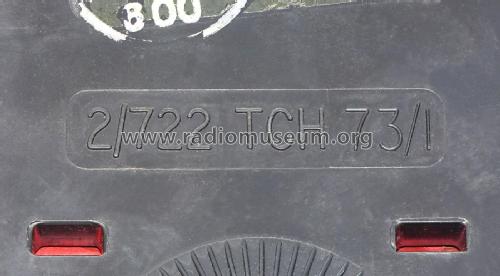Trimphone 712/722
Standard Telephones and Cables Ltd. (STC); London, Foots Cray
- Country
- Great Britain (UK)
- Manufacturer / Brand
- Standard Telephones and Cables Ltd. (STC); London, Foots Cray
- Year
- 1965
- Category
- Telephony - wire and wireless
- Radiomuseum.org ID
- 304519
-
- Brand: Micromesh tubes
Click on the schematic thumbnail to request the schematic as a free document.
- Number of Transistors
- 2
- Semiconductors
- BC108B
- Wave bands
- - without
- Power type and voltage
- No Power needed
- Material
- Plastics (no bakelite or catalin)
- from Radiomuseum.org
- Model: Trimphone 712/722 - Standard Telephones and Cables
- Dimensions (WHD)
- 108 x 114 x 216 mm / 4.3 x 4.5 x 8.5 inch
- Notes
-
The name Trimphone stands for Tone Ring Illuminated Model Phone. The name was retained after the illumination function was withdrawn because of safety concerns. Initially designed by STC and produced in Larne, Northern Ireland (code TCH), trimphones were also manufactured by GEC-AEI Telecommunications in Newton Aycliffe, County Durham (code GEN), and in the GPO Factory in Cwmcar in Wales (code FWR).
Rotary dial, rendered luminous in the early 712 models by a C-shaped glass tube of radioactive tritium gas inserted behind the dial number ring.
The model 722, introduced in 1971, had improved transmission circuitry, suitable for local lines with an attenuation of up to 10 dB at 1600 Hz.
2350 Hz warbling electronic ringer instead of magneto bell. The transistor oscillator in the ringer is powered by rectified ringing current. Adjustable volume, including a steadily rising intensity option. Early models used a single transistor with a thermistor to provide the crescendo feature, whereas later models used two BC108B transistors.
As issued, a ringer cut-off facility in the telephones was disabled. In the case that the trimphone is not the only telephone in an installation, the cut-off facility can be enabled by removing a stop screw from the ringtone control switch.
A dummy plate at the front of the base can be removed to fit a changeover press switch (No. 13A-2).
Receiver inset No. 3T and transmitter inset No. 15 are both housed in the handset earpiece, an acoustic horn within the handset handle coupling the mouthpiece to the transmitter. Note that this means that covering the mouthpiece may not entirely mute the sound pickup.
From 1973 some models were fitted inside the telephone base with a cylindrical blue plastic-covered component marked No. 7A. This is a regulator that is wired across the transmitter terminals to protect the inset from the effects of excessively high current on short lines.The first model was available in two-tone blue, off-white/light grey and grey/olive green, with the handset taking the darker colour.
- Net weight (2.2 lb = 1 kg)
- 0.8 kg / 1 lb 12.2 oz (1.762 lb)
- Author
- Model page created by Bruce Taylor. See "Data change" for further contributors.
- Other Models
-
Here you find 39 models, 34 with images and 11 with schematics for wireless sets etc. In French: TSF for Télégraphie sans fil.
All listed radios etc. from Standard Telephones and Cables Ltd. (STC); London, Foots Cray
Collections
The model Trimphone is part of the collections of the following members.
